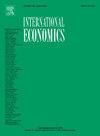What role for aid for trade in (deep) PTA relations? Empirical evidence from gravity model estimations
引用次数: 0
Abstract
While preferential trade agreements (PTAs) cover an increasing range of policy areas, little is known about the implications of this new emphasis on interactions with other trade-related policies. We approach this gap by examining the effectiveness of bilateral aid for trade (AfT) in promoting exports for recipient countries within deep North–South PTA relations. Using a structural gravity model for bilateral panel data of 29 OECD DAC countries and 144 developing countries from 2002 to 2015, we find that the marginal effect of AfT decreases as PTA policy areas expand. Further investigation of the underlying mechanisms suggests that the observed trade-off between PTA depth and AfT effectiveness may be due to compliance with the non-tariff provisions contained in deep PTAs. We find two lines of reasoning plausible. First, compliance efforts appear to consume large fractions of AfT, reducing its availability for potentially more effective projects. Second, since we also observe heterogeneity in interactions across donors, AfT provided by high-income PTA partners could well be used to redirect exports to third countries with comparatively fewer bilateral obligations. Provided that a core focus of AfT remains on strengthening international trade relations, including between donors and recipients, donor countries should therefore carefully weigh compliance costs to developing countries against the non-trade benefits of common deep PTAs, and accurately identify financial and technical assistance needs with their PTA partners.
在(深度)PTA关系中,贸易援助扮演什么角色?来自重力模型估计的经验证据
虽然优惠贸易协定涵盖越来越多的政策领域,但对这种新的强调与其他与贸易有关的政策相互作用的影响所知甚少。我们通过审查双边贸易援助(AfT)在深入的南北优惠贸易区关系中促进受援国出口方面的有效性来解决这一差距。利用结构重力模型对29个OECD DAC国家和144个发展中国家2002 - 2015年的双边面板数据进行分析,我们发现AfT的边际效应随着PTA政策领域的扩大而减小。对潜在机制的进一步调查表明,所观察到的优惠贸易区深度与贸易便利化有效性之间的权衡可能是由于遵守了深度优惠贸易区中包含的非关税规定。我们发现有两条推理思路是合理的。首先,法规遵循工作似乎消耗了大量的AfT,降低了其对潜在的更有效的项目的可用性。其次,由于我们也观察到捐助者之间相互作用的异质性,高收入PTA合作伙伴提供的AfT可以很好地用于将出口转向双边义务相对较少的第三国。如果《优惠贸易协定》的核心重点仍然是加强国际贸易关系,包括援助国和受援国之间的贸易关系,那么援助国应仔细权衡发展中国家的遵守成本和共同深层优惠贸易协定的非贸易利益,并准确地确定其优惠贸易协定伙伴的财政和技术援助需要。
本文章由计算机程序翻译,如有差异,请以英文原文为准。
求助全文
约1分钟内获得全文
求助全文
来源期刊

International Economics
Economics, Econometrics and Finance-Economics, Econometrics and Finance (all)
CiteScore
6.30
自引率
0.00%
发文量
74
审稿时长
71 days
 求助内容:
求助内容: 应助结果提醒方式:
应助结果提醒方式:


